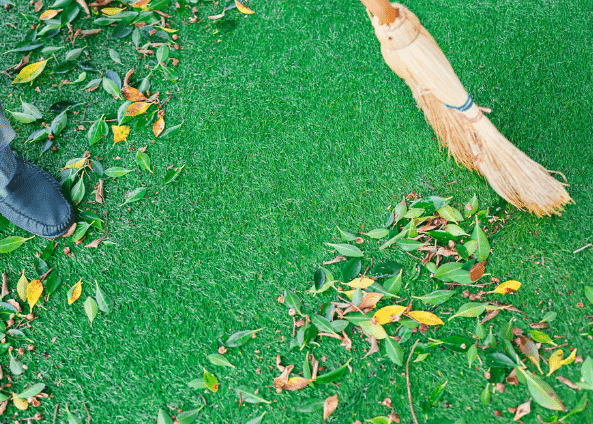Ways To Care About Your Synthetic Grass In La Jolla
 Artificial grass is an increasingly popular outdoor landscaping choice because it requires less maintenance than natural grass. Whether you’re using artificial turf for a backyard, a pet area, or a play area, here are some tips to keep your synthetic grass looking and feeling its best:
Artificial grass is an increasingly popular outdoor landscaping choice because it requires less maintenance than natural grass. Whether you’re using artificial turf for a backyard, a pet area, or a play area, here are some tips to keep your synthetic grass looking and feeling its best:
- Dirt and debris should be removed from the turf regularly to prevent damage to the material and avoid creating muddy patches. To clean your synthetic grass use a soft brush or leaf blower set on low to gently remove dirt particles.
- Synthetic turf can be damaged by dogs, children playing with sharp objects, heavy furniture being moved around, or improper installation. It is important to repair any damage as soon as possible to avoid further damage and reduce the chance of weeds or mold growing in the affected area.
- Weeds can grow through synthetic grass, so it is important to use weed killers sparingly and follow the manufacturer’s recommendations for application. The best way to prevent weeds from growing is by regularly removing organic material such as fallen leaves or mulch that could attract weeds.
- Artificial turf does not need to be watered like natural grass, however some areas may require occasional supplemental watering if they are in direct sunlight for long periods of time. If runoff begins to form, it is an indicator that you are overwatering and should adjust your watering schedule accordingly.
- Over time, infill material such as rubber crumb or sand can become compacted and need to be re-infilled periodically. This helps keep the turf looking lush and adds cushion for playing sports or walking on the grass.
FAQ’s
How To Clean Synthetic Grass?
To clean your synthetic grass use a soft brush or leaf blower set on low to gently remove dirt particles.
Do I Need To Water Synthetic Grass?
No, artificial turf does not need to be watered like natural grass, however some areas may require occasional supplemental watering if they are in direct sunlight for long periods of time. If runoff begins to form, it is an indicator that you are overwatering and should adjust your watering schedule accordingly.
How Often Should I Re-Infill My Synthetic Grass?
Over time, infill material such as rubber crumb or sand can become compacted and need to be re-infilled periodically. This helps keep the turf looking lush and adds cushion for playing sports or walking on the grass. It is recommended to re-infill your turf every 6 months or as needed.
Conclusion
Caring for synthetic grass doesn’t have to be complicated. By following these seven tips, you can ensure that your artificial turf stays looking great and provides comfort and safety for years to come. For more information, contact Artificial Grass La Jolla at (858) 779-0088.